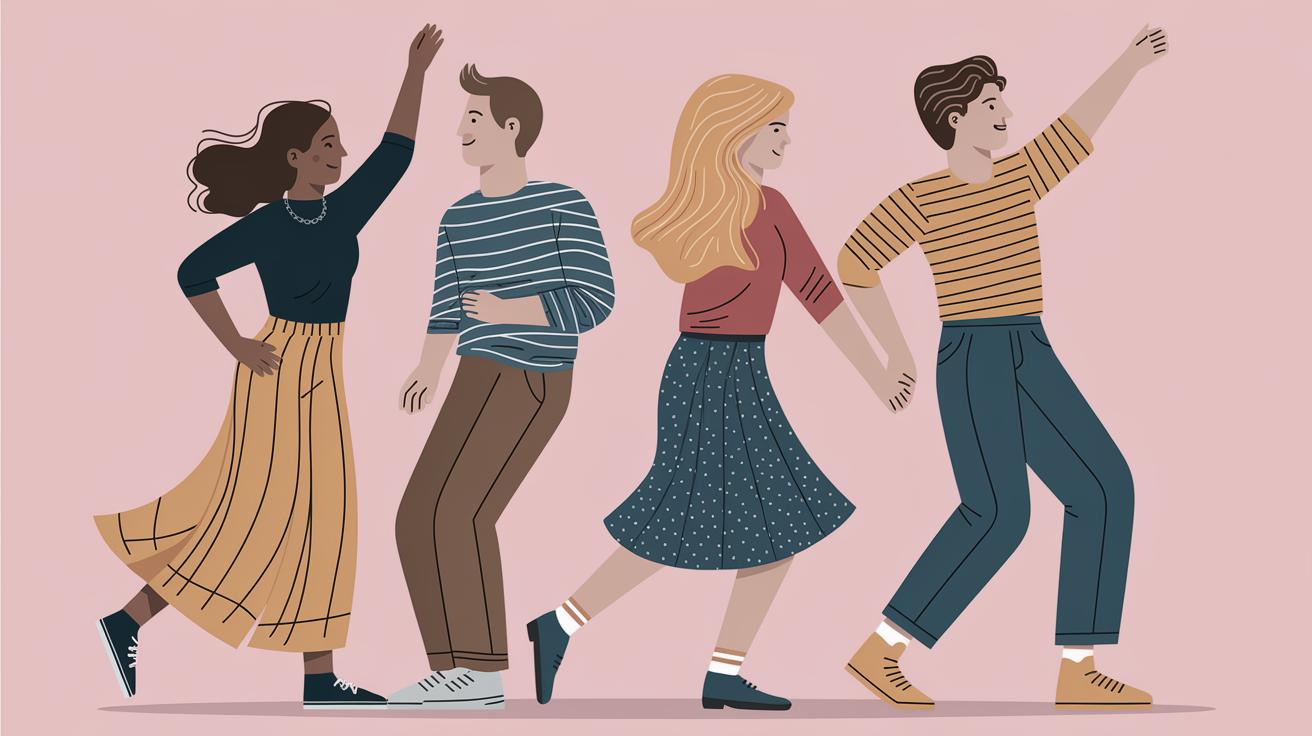Exploring the Joys of Dance: A Detailed Guide
Dance, an art form that transcends cultural and linguistic barriers, is a beautiful expression of human emotion and connection. From the graceful waltz to the electrifying hip hop, dancing holds a special place in societies around the world. This blog post delves into the fascinating world of dance, offering readers insights on how to learn to dance, the therapeutic benefits of movement, and how complementary moves can elevate the experience. Whether you’re an enthusiastic beginner or a seasoned enthusiast, this guide provides practical tips and an extensive exploration of the role of dance in our lives. Discover how you can engage your body and mind as you unlock the transformative power of dance.
Learning How To Dance
A Helpful Step By Step Guide on How To Dance in Your Own Home
Starting your dance journey at home can be both exciting and fulfilling. One of the first steps is to clear a space where you can move freely without any obstacles. Ensure you have a good pair of shoes or go barefoot if you prefer, especially if your floor allows for it. Set up your space with adequate lighting, and play some music that you love and can easily follow. Before diving into complex moves, begin with a simple routine. For instance, start with side-to-side steps to get into the rhythm, while using your arms to express the music’s motion.
Watching dance tutorials online can be incredibly helpful as they provide visual and verbal cues. Take it slow by pausing and replaying the steps as needed. Mirror the instructor and practice consistently to embed the routine in your muscle memory. Don’t rush the process; enjoy each move and gradually build your confidence. As you get comfortable, embellish your moves and incorporate your style. The key to mastering dance at home lies in dedication, practice, and the readiness to embrace mistakes as learning opportunities.
How To Dance Different Kinds of Ways: A Step by Step Guide
Exploring different dance styles can add a new dimension to your dancing skills. To start with Ballroom dancing, focus on learning the classic Waltz, known for its grace and elegance. Begin with the basic box step and work your way to more intricate sequences. Hip hop, on the other hand, emphasizes freedom and expression, with moves like the Dougie or the Cabbage Patch being foundational steps to master.
For Latin dances such as Salsa or Tango, it is crucial to understand the rhythm that drives these passionate genres. Salsa requires learning the basic steps, like the Salsa basic and cross-body lead, to develop fluency. Each dance style has unique characteristics and learning them diversifies your dancing vocabulary. Embrace each style with its cultural roots and let the music guide your movements. Attend community classes if possible to get feedback and enhance your skills in a supportive environment.
Stimulating Movement
Dance is not just about the choreography; it’s also about the freedom of movement and emotional release it brings. Stimulating movement through dance involves engaging both the body and the mind, which can lead to enhanced physical and mental alertness. When dancing, the emphasis is often on fluidity, allowing the body to move uninhibitedly in response to music.
Incorporating dance into your routine can stimulate endorphin production, leading to better mood regulation and stress relief. It encourages cardiovascular fitness as the entire body is engaged, significantly improving coordination and balance. Over time, dancers develop an acute sense of spatial awareness and instinctive musicality. This stimulation of movement becomes more than just an exercise but a holistic practice with significant health benefits.
Movement as Therapy
Dance movement therapy has gained immense recognition for its psychological benefits. By utilizing dance as a form of therapy, individuals can achieve emotional, cognitive, and social integration. It provides an alternative way of coping with stressors and emotional turmoil by encouraging participants to articulate their emotions through movement rather than words.
For individuals experiencing anxiety or depression, dance serves as a powerful therapeutic tool to redirect their focus from negative thoughts to expressive movement. It fosters a supportive space where individuals can explore and accept their feelings, promoting healing. Dance movement therapy sessions are usually guided by trained therapists who facilitate a safe environment for self-discovery, offering both verbal and non-verbal techniques tailored to individual needs.
Complementary Moves
Complementary movements in dance involve combining different dance styles or techniques to create a harmonious performance. This integration of moves often leads to innovative dance forms, showcasing the dancer’s versatility and creativity. For instance, blending contemporary dance with elements of classical ballet can result in a dynamic performance that captivates and inspires audiences.
Moreover, complementary moves are essential in partner dances where synergy and coordination are indispensable. In styles such as Swing or Lindy Hop, knowing how to complement each other’s moves leads to seamless transitions and more enjoyable performances. Dancers learn to anticipate their partner’s next move and respond instinctively. This partnership fosters a deep connection and understanding, both on and off the dance floor.
Lessons Learned
| Section | Key Points |
|---|---|
| Learning How To Dance | Step by step guides on starting at home; exploring various styles to enhance skills |
| Stimulating Movement | Dance as a form of physical and mental stimulation, enhancing health and coordination |
| Movement as Therapy | Using dance to promote emotional and psychological well-being, with therapeutic benefits |
| Complementary Moves | Integrating different dance styles and coordinating with partners for innovative performances |


